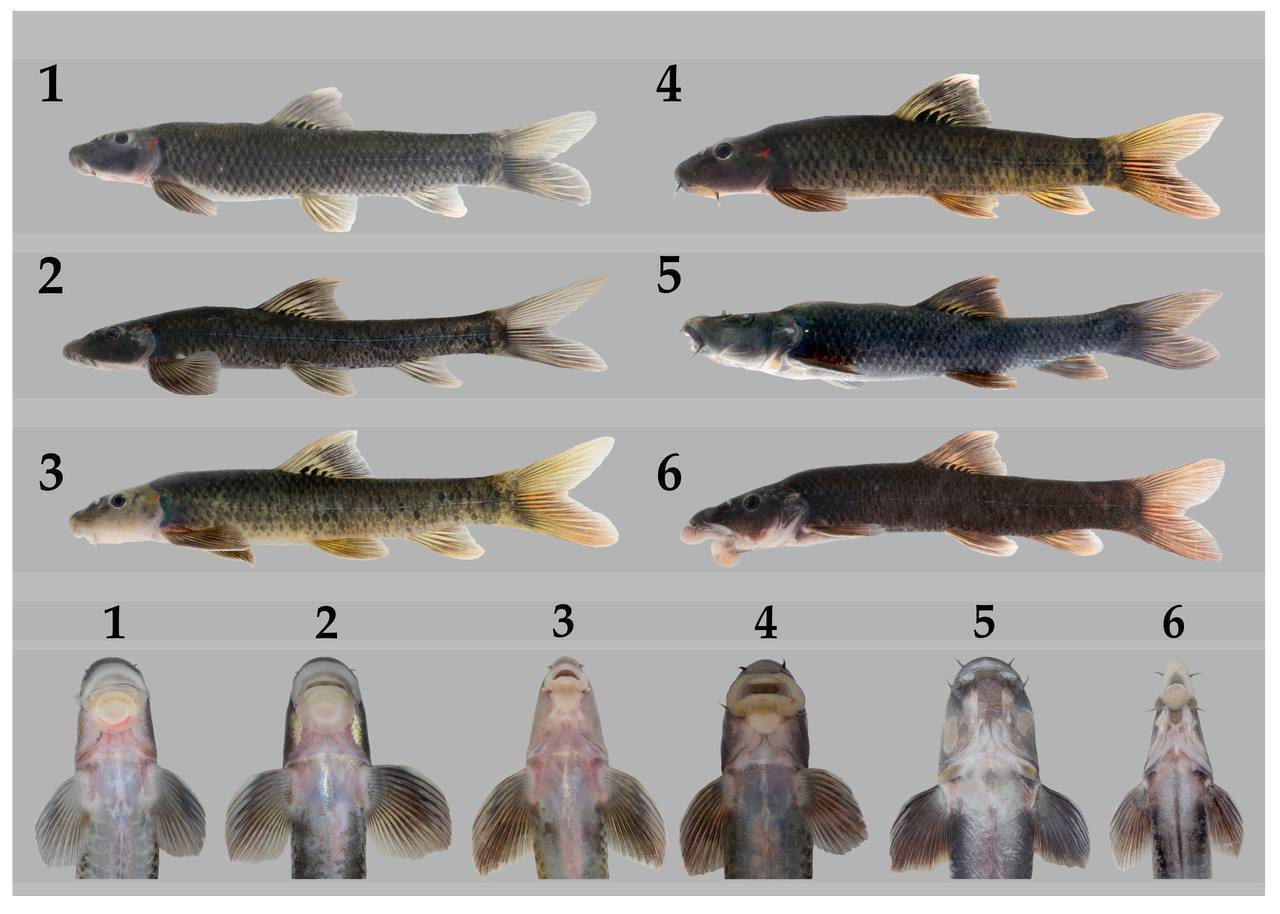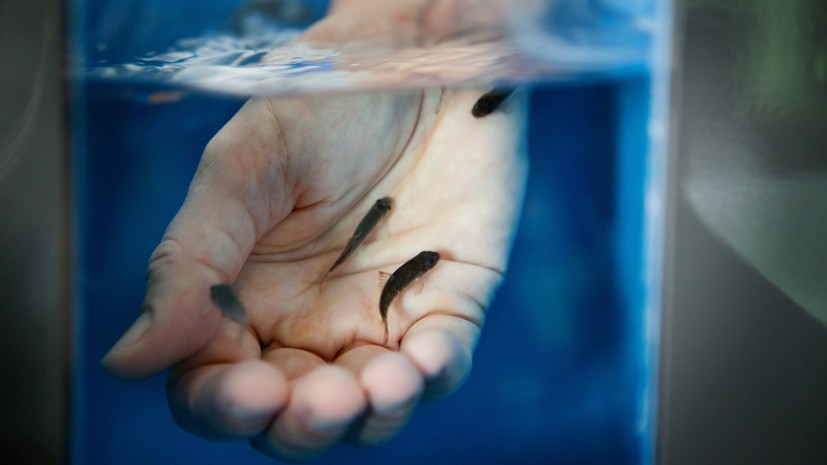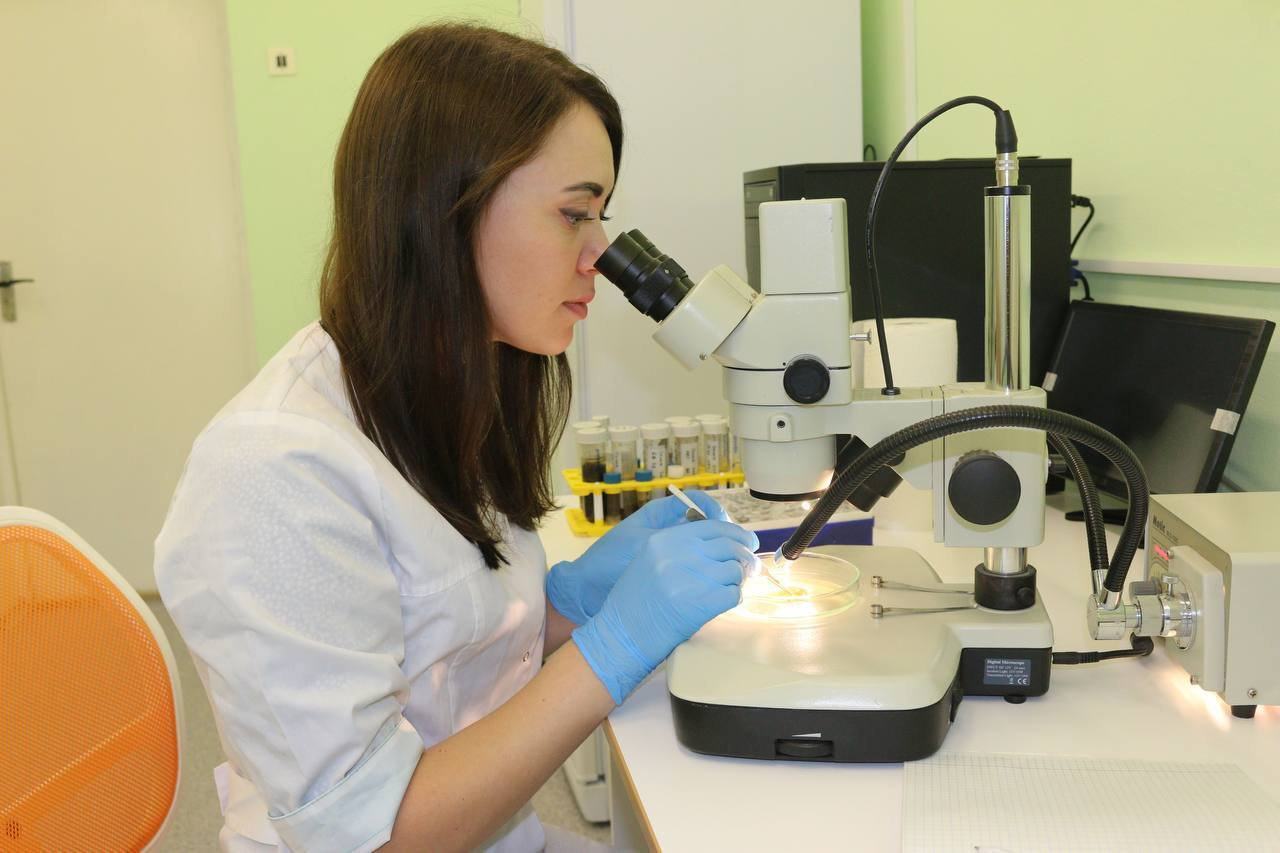
Russian scientists from the I.D. Papanin Institute of Biology of Inland Waters, A.N. Severtsov Institute of Ecology and Evolution RAS and Cherepovets State University discovered that one of the species of tropical fish, which previously ate only plant foods, at some point split into herbivores and predators. The study was supported by the Russian Science Foundation (RSF). The results are published in the journal Diversity.
Living organisms in the process of evolution are forced to adapt to various living conditions. As a result, some of them acquire very specific features that help them occupy a narrow niche and avoid competition both with relatives and representatives of other species. Tropical fish of the genus Garra followed this path. Their jaws have expanded over time and developed into scrapers with a sharp cutting edge, which helps them scrape algae (periphyton) from stones. In the same way, they are able to scrape off dead particles from human skin, which alleviates the symptoms of psoriasis, which is why some fish from the genus Garra are also known as doctor fish.
“When populations increase rapidly in size, intraspecific competition often occurs. The answer to it can be the so-called adaptive radiation, in which forms arise that occupy different ecological niches: someone acquires sustenance from the water column, and someone from the surface, and so on. The division of food resources during cohabitation is the initial stage of the so-called sympatric speciation. It is not often found in nature, but it provides valuable information about how new species appear,” says the first author of the article, Alexandra Komarova, junior researcher at the I.D. Papanin Institute of Biology of Inland Waters RAS.

Earlier, in the Sor River in the Ethiopian Highlands (in the White Nile basin), six forms of a relative of the doctor fish were found, differing both in appearance and genetically. This is rather unusual: the conditions in mountain rivers are very changeable, and at first glance there are no prerequisites for the emergence of some new specialization. In their work, researchers from the I.D. Papanin RAS (Borok), A.N. Severtsov RAS (Moscow) and Cherepovets State University (Cherepovets) revealed the ecological component of this phenomenon.
Since the externally studied fish differ in features that are somehow related to nutrition, the authors measured the length of their intestines, studied their contents, and analyzed the stable isotopes of nitrogen and carbon in white muscles, the ratio of which allows us to understand what the animals ate for a long period (approximately six months). This was necessary because the nutrition of fish can be changeable and assessment by intestinal contents does not provide sufficient information.
The results of the study confirmed that in the past there was a division of the species into ecological forms in accordance with the type of food. Some fish continued to feed on algae, others became predators, and still others acquired mixed characteristics. The fish that ate the algae had more carbon-13 isotopes, predominantly accumulating in single-celled algae. The intestines of these animals developed to be 1.5–2 times longer than those of carnivorous relatives, since plant food is digested over longer periods of time and this is the only way to ensure its effective assimilation.

The appearance of herbivores and predators also differed: in the latter, the mouth apparatus became more like a wide slot with a lock than a scraper - it is more convenient to capture and hold prey. The authors also discovered a completely new form that has never been seen among doctor fish, despite their wide distribution from Southeast Asia to West Africa. It has thick lips and appears to be the result of crossbreeding of other cohabiting forms; while the purpose of this modification of the oral apparatus is not entirely clear.
“Although it is generally accepted that specialized forms arise from more generalized ones, that is, without any striking adaptations, our observations have shown that this is not always the case. The narrow scraping specialist of the genus Garra diversified his diet, and in some cases completely changed it. In a particular Ethiopian river, this can be explained by the fact that the doctor fish does not have many natural enemies, and there are not many competitors of other species either, and therefore you can “relax” and get out of your narrow niche,” sums up the head of the project, supported by a grant from the Russian Science Foundation, Boris Levin, Candidate of Biological Sciences, Leading Researcher in I.D. Papanin Institute of Biology of Inland Waters RAS.
As the researchers emphasize, the observed situation expands the list of examples of a rather rare Liem's paradox, according to which the structure of the animal's mouth apparatus does not necessarily correspond to the type of its food. Outbreaks of diversification, that is, rapid separation into different ecological forms and species, apparently occur only in certain parts of the river network, where, on the one hand, there are not so many predators, and on the other hand, there is no competition with other highly specialized species, while there are available ecological niches.
Related materials:
RT: ""Intraspecific competition": how herbivorous fish turned into predators"
Polit.ru: "Exploring new ecological niches, tropical fish have turned from algae eaters into
predators"
